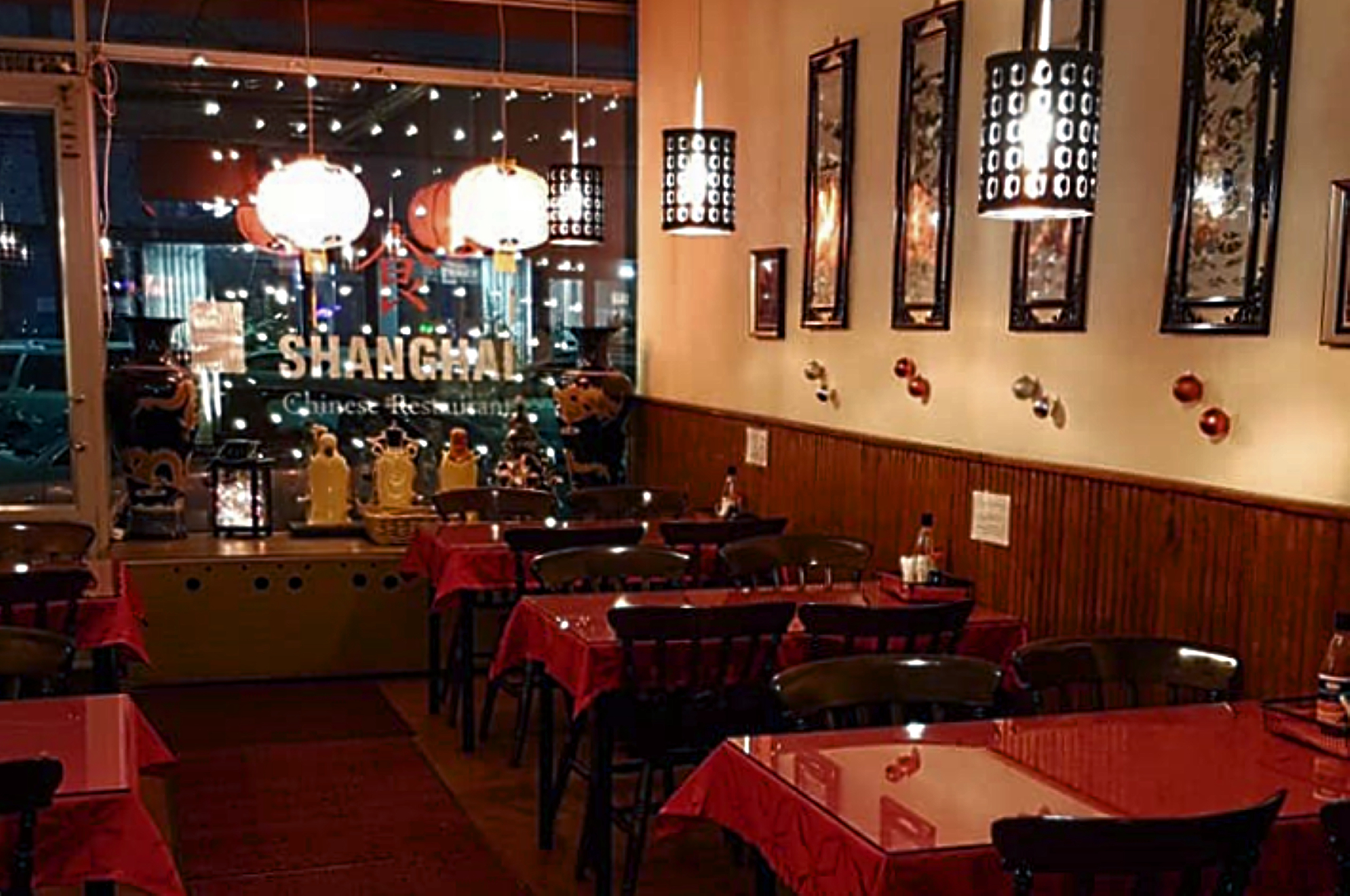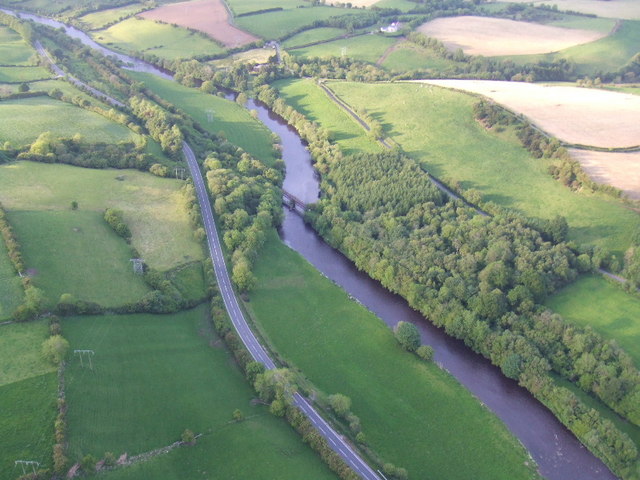|
Cookstown Railway Station (NCC)
Cookstown railway station served Cookstown in County Tyrone in Northern Ireland. The Belfast and Ballymena Railway (BBR) opened the station on 10 November 1856 as the terminus of an extension to their existing Randalstown branch line. In 1860 the BBR became the Belfast and Northern Counties Railway, which would go on to be absorbed by the Midland Railway in 1903, becoming the Northern Counties Committee (NCC). In 1879, the Great Northern Railway (GNR) reached Cookstown by way of Dungannon and Stewartstown. Though located next door to the BBR station on Molesworth Street, the GNR station was completely separate. A rail connection between the two stations existed, but for transfer of goods wagons only. There were no through passenger workings. It was closed to passengers by the Ulster Transport Authority on 28 August 1950 and to goods on 2 May 1955. The Italianate station building, designed by Charles Lanyon, is made of sandstone Sandstone is a clastic sedimentary ro ... [...More Info...] [...Related Items...] OR: [Wikipedia] [Google] [Baidu] |
Cookstown
Cookstown ( ga, An Chorr Chríochach, IPA: �anˠˈxoːɾˠɾˠˈçɾʲiːxəx is a small town in County Tyrone, Northern Ireland. It is the fourth largest town in the county and had a population of 11,599 in the 2011 census. It, along with Magherafelt and Dungannon, is one of the main towns in the Mid-Ulster council area. It was founded around 1620 when the townlands in the area were leased by an English ecclesiastical lawyer, Dr. Alan Cooke, from the Archbishop of Armagh, who had been granted the lands after the Flight of the Earls during the Plantation of Ulster. It was one of the main centres of the linen industry west of the River Bann, and until 1956, the processes of flax spinning, weaving, bleaching and beetling were carried out in the town. History In 1609 land was leased to an English ecclesiastical lawyer, Dr Cooke, who fulfilled the covenants entered in the lease by building houses on the land. In 1628, King Charles I granted Letters Patent to Cooke permitti ... [...More Info...] [...Related Items...] OR: [Wikipedia] [Google] [Baidu] |
Italianate Architecture
The Italianate style was a distinct 19th-century phase in the history of Classical architecture. Like Palladianism and Neoclassicism, the Italianate style drew its inspiration from the models and architectural vocabulary of 16th-century Italian Renaissance architecture, synthesising these with picturesque aesthetics. The style of architecture that was thus created, though also characterised as "Neo-Renaissance", was essentially of its own time. "The backward look transforms its object," Siegfried Giedion wrote of historicist architectural styles; "every spectator at every period—at every moment, indeed—inevitably transforms the past according to his own nature." The Italianate style was first developed in Britain in about 1802 by John Nash, with the construction of Cronkhill in Shropshire. This small country house is generally accepted to be the first Italianate villa in England, from which is derived the Italianate architecture of the late Regency and early Victorian e ... [...More Info...] [...Related Items...] OR: [Wikipedia] [Google] [Baidu] |
Belfast And Ballymena Railway
The Northern Counties Committee (NCC) was a railway that served the north-east of Ireland. It was built to Irish gauge () but later acquired a number of narrow gauge lines. It had its origins in the Belfast and Ballymena Railway that opened to traffic on 11 April 1848. The NCC itself was formed on 1 July 1903 as the result of the Midland Railway of England taking over the Belfast and Northern Counties Railway (BNCR), which the Belfast and Ballymena Railway had become. At the 1923 Grouping of British railway companies, the Committee became part of the London Midland & Scottish Railway (LMS). After the nationalisation of Britain's railways in 1948 the NCC was briefly part of the British Transport Commission, which sold it to the Ulster Transport Authority (UTA) in 1949. The BNCR and its successors recognised the potential value of tourism and were influential in its development throughout Northern Ireland. They were able to develop and exploit the advantages of the Larne – ... [...More Info...] [...Related Items...] OR: [Wikipedia] [Google] [Baidu] |
Chinese Restaurant
A Chinese restaurant is an establishment that serves a Chinese cuisine. Most of them are in the Cantonese style, due to the history of the Chinese diaspora and adapted to local taste preferences, as in the American Chinese cuisine and Canadian Chinese cuisine. The Chinese restaurants in the Netherlands usually combine Cantonese and Indonesian meals on their menu. ''Chinese takeouts'' (United States and Canada) or ''Chinese takeaways'' (United Kingdom and Commonwealth) are terms to describe the act of ordering the meal(s) with the intent to eat the food at another location, such as at work or home. It can be found either as a service option of eat-in establishments or as separate establishments. History United States Chinese restaurants in the United States began during the California gold rush, which brought twenty to thirty thousand immigrants across from the Canton (Kwangtung or Guangdong) region of China. The first documented Chinese restaurant opened in 1849 as t ... [...More Info...] [...Related Items...] OR: [Wikipedia] [Google] [Baidu] |
Listed Building
In the United Kingdom, a listed building or listed structure is one that has been placed on one of the four statutory lists maintained by Historic England in England, Historic Environment Scotland in Scotland, in Wales, and the Northern Ireland Environment Agency in Northern Ireland. The term has also been used in the Republic of Ireland, where buildings are protected under the Planning and Development Act 2000. The statutory term in Ireland is "protected structure". A listed building may not be demolished, extended, or altered without special permission from the local planning authority, which typically consults the relevant central government agency, particularly for significant alterations to the more notable listed buildings. In England and Wales, a national amenity society must be notified of any work to a listed building which involves any element of demolition. Exemption from secular listed building control is provided for some buildings in current use for worsh ... [...More Info...] [...Related Items...] OR: [Wikipedia] [Google] [Baidu] |
Sandstone
Sandstone is a clastic sedimentary rock composed mainly of sand-sized (0.0625 to 2 mm) silicate grains. Sandstones comprise about 20–25% of all sedimentary rocks. Most sandstone is composed of quartz or feldspar (both silicates) because they are the most resistant minerals to weathering processes at the Earth's surface. Like uncemented sand, sandstone may be any color due to impurities within the minerals, but the most common colors are tan, brown, yellow, red, grey, pink, white, and black. Since sandstone beds often form highly visible cliffs and other topographic features, certain colors of sandstone have been strongly identified with certain regions. Rock formations that are primarily composed of sandstone usually allow the percolation of water and other fluids and are porous enough to store large quantities, making them valuable aquifers and petroleum reservoirs. Quartz-bearing sandstone can be changed into quartzite through metamorphism, usually r ... [...More Info...] [...Related Items...] OR: [Wikipedia] [Google] [Baidu] |
Charles Lanyon
Sir Charles Lanyon DL, JP (6 January 1813 – 31 May 1889) was an English architect of the 19th century. His work is most closely associated with Belfast, Northern Ireland. Biography Lanyon was born in Eastbourne, Sussex (now East Sussex) in 1813. His father was John Jenkinson Lanyon, a purser in the Royal Navy, and his mother was Catherine Anne Mortimer. Following his education, he became an apprentice civil engineer with Jacob Owen in Portsmouth. When Owen was made senior Engineer and Architect of the Irish Board of Works and moved to Dublin, Lanyon followed. In 1835 he married Owen's daughter, Elizabeth Helen. They had ten children, including Sir William Owen Lanyon, an army officer and colonial administrator. Charles Lanyon was county surveyor in Kildare briefly, before moving on to Antrim in 1836. He remained county surveyor of Antrim until 1860 when he resigned from the post to concentrate on private work and other interests. Lanyon was elected Mayor of Belfast in ... [...More Info...] [...Related Items...] OR: [Wikipedia] [Google] [Baidu] |
Ulster Transport Authority
The Ulster Transport Authority (UTA) ran rail and bus transport in Northern Ireland from 1948 until 1966. Formation and consolidation The UTA was formed by the Transport Act 1948, which merged the Northern Ireland Road Transport Board (NIRTB) and the Belfast and County Down Railway (BCDR). Added to this in 1949 was the Northern Counties Committee (NCC), owned by the British Transport Commission's Railway Executive since its previous owner, the London, Midland and Scottish Railway (LMS), had been nationalised in 1948. Branch railway closures In January 1950 the UTA closed almost the entire BCDR network except the Queen's Quay, Belfast – Bangor commuter line. In the same year it closed the Macfin – Kilrea section of the former NCC's Derry Central Railway and the freight-only former NCC line from Limavady to Dungiven. It also withdrew passenger services from the former NCC branch lines to Cookstown, Draperstown and Limavady and the Magherafelt – Kilrea section of ... [...More Info...] [...Related Items...] OR: [Wikipedia] [Google] [Baidu] |
County Tyrone
County Tyrone (; ) is one of the six counties of Northern Ireland, one of the nine counties of Ulster and one of the thirty-two traditional counties of Ireland. It is no longer used as an administrative division for local government but retains a strong identity in popular culture. Adjoined to the south-west shore of Lough Neagh, the county covers an area of and has a population of about 177,986; its county town is Omagh. The county derives its name and general geographic location from Tír Eoghain, a Gaelic kingdom under the O'Neill dynasty which existed until the 17th century. Name The name ''Tyrone'' is derived , the name given to the conquests made by the Cenél nEógain from the provinces of Airgíalla and Ulaid.Art Cosgrove (2008); "A New History of Ireland, Volume II: Medieval Ireland 1169-1534". Oxford University Press. Historically, it was anglicised as ''Tirowen'' or ''Tyrowen'', which are closer to the Irish pronunciation. History Historically Tyrone (then ... [...More Info...] [...Related Items...] OR: [Wikipedia] [Google] [Baidu] |
Cookstown Railway Station
Cookstown railway station was one of two stations serving Cookstown in County Tyrone in Northern Ireland. The Great Northern Railway opened the station on 28 August 1879 as the terminus of a branch from Dungannon. The Great Northern Railway (GNR) was the second railway company to reach Cookstown- In 1856 the Belfast and Ballymena Railway opened a branch line to the town by way of Randalstown and Magherafelt. Though located next door to the BBR station on Molesworth Street, the GNR station was completely separate. A rail connection between the two stations existed, but for transfer of goods wagons only. There were no through passenger workings. It was closed to passengers by the Great Northern Railway Board on 16 January 1956 and to goods on 5 October 1959. The station building was designed by William Henry Mills in his typical polychrome style, with red and yellow Flemish-bond brickwork. After closure it became Council property, and listed in 1975. Today, it is used a ... [...More Info...] [...Related Items...] OR: [Wikipedia] [Google] [Baidu] |





Saunders_Quarry-1.jpg)


